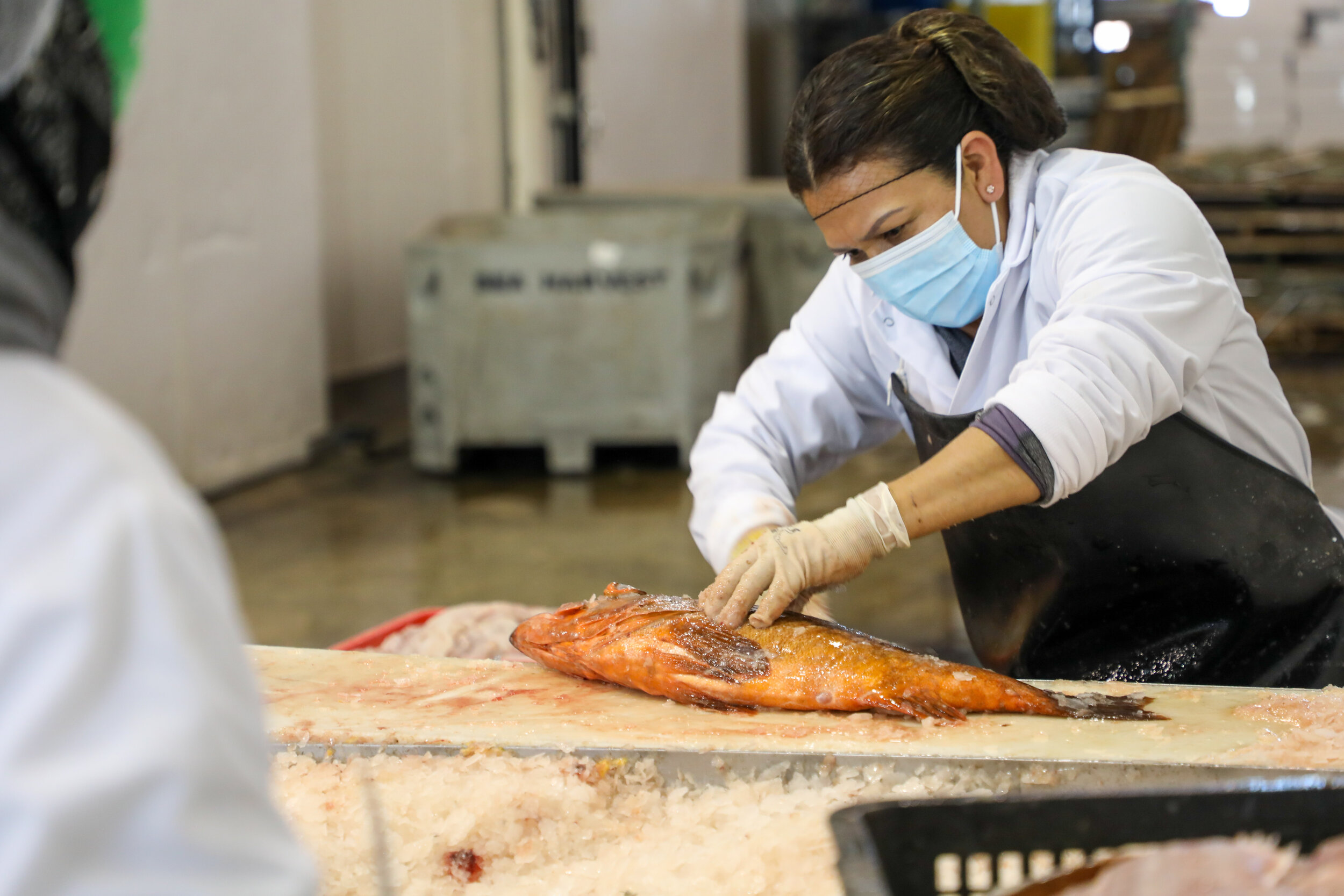Fish cutters and processing workers - The unsung heroes of local seafood
A few thousand pounds of Chilipepper rockfish were hoisted from a Deyerle family fishing boat in Moss Landing in late October. They were then placed on ice in totes by dockworkers. Another worker picked up a heavy tote with a forklift and drove it inside the Deyerle Brothers Seafood processing facility where fish cutters were standing by to fillet the fish. At the same time, a group of processing workers stood around a table cleaning a small load of fresh California market squid that was delivered earlier in the day.
Sabina Duran fillets a Chilipepper rockfish at Deyerle Bros. Seafood
Photo: Nick Rahaim
There was a frenetic pace inside the plant, with around a dozen processing workers wearing masks, gloves, and protective gear, each with a task to help move the day’s catch into a consumer-friendly product. Andrés Jacobo, the plant manager, directed the operation and pointed out what people were doing on that day.
The work depends on the season and can even depend on the day: Dungeness crab in the winter, king salmon in the summer, and a variety of groundfish throughout the year, including halibut, blackcod, Chilipepper rockfish, petrale sole, among many others.
“It’s fun here,” Jacobo said. “Every day is different, so it never gets boring.”
Some of the Chilipepper rockfish caught that day would be quickly sent off to the Deyerle family’s Sea Harvest Restaurant & Fish Markets in Carmel, Moss Landing, and Monterey. The rest of it would go to Real Good Fish, the Moss Landing based community supported fishery (CSF) that contracts with Deyerle Brothers Seafood for fish cutting and preparation.
“Processors and fish cutters provide an essential service. They play a critical role in making it easier for consumers to enjoy the product,” said Alan Lovewell, co-owner of Real Good Fish. “We could just sell people whole fish, but most people don’t want that.”
Jacobo and Lovewell both pointed to a woman, Sabina Duran who was deftly filleting Chilipepper rockfish at her station. Duran has worked in the seafood industry for nearly three decades and now finds fish cutting to be a meditative practice.
“I love this, I really enjoy it,” Duran said while she was cutting rockfish at the rate of one fillet per second. “People look at me like ‘oh you’re weird’ when I say that, but I really do!”
Working the “slime line,” as it’s often referred to in the industry, often lacks the glory of the work done by those harvesting fish on the water, but it’s an indispensable part of the local seafood supply chain. And it’s hard work: conditions can be cold, repetitive motions can inflame tendonitis, and sharp blades always threaten a deep puncture or gash.
“Fish cutting is hard — it’s an art form. You get a lot of pokes from the spines of the fish,” said Joe Roggio, the chief financial officer at Del Mar Seafoods in Watsonville. “It takes quite a bit of work to train someone to be efficient at it, but then some people are just good at it.”
Whether Santa Cruz, Moss Landing, or Monterey, people are working behind the scenes using their finely honed craft to transform the catch-of-the-day into an accessible and easy-to-prepare product you can find from a local CSF or fish market. And believe it or not, many are having a good time while they’re at it.

